
100 Bay Street
Sausalito, CA, US, 94965
Tel:415-331-6200
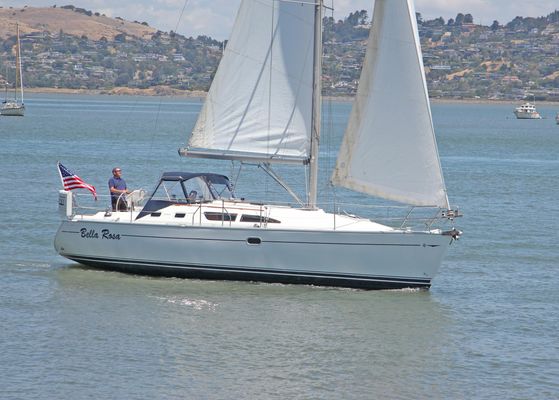
2000 Jeanneau Sun Odyssey 37
The Jacque Fauroux-designed Sun Odyssey 37 was first launched in 1999 to replace the popular Sun Odyssey 36.2 (which had won Cruising World's Boat of the Year award) and went on to became a smash hit in it's own right, easily one of Jeanneau's best selling designs ever.
This particular one-owner meticulously maintained example has always been a local boat and shows MUCH newer than her actual age, more like a 2015 vessel! She's the deep draft, two cabin version and was last hauled in 2021, sails are about six years old and show practically as new, new batteries three years ago, new dodger and canvas about two years ago, low time (797 hours) on spotless Yanmar diesel, this boat really must be seen to be appreciated.
Also, note she's lying in a potentially transferable Sausalito Yacht Harbor slip right downtown--there's a long wait to get into the marina here so this is a material benefit if you're able to take advantage.
Specifications
Engine 1 Specifications
Media Gallery
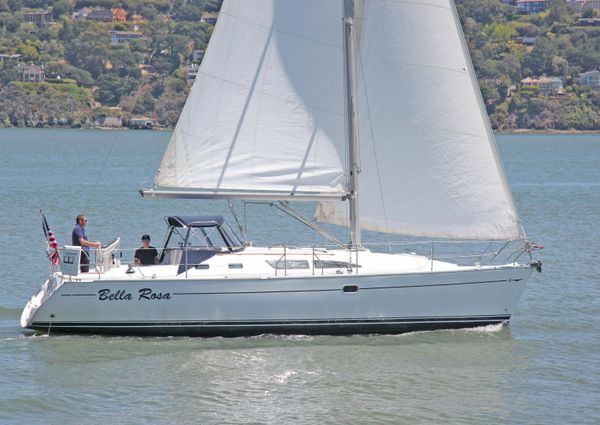 |
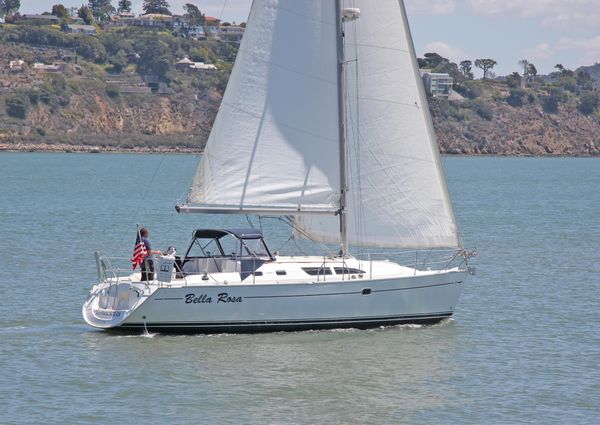 |
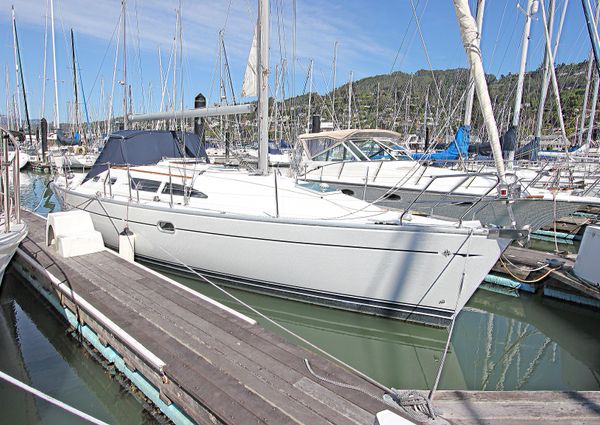 |
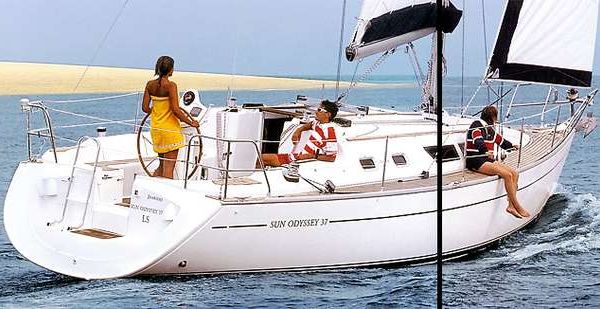 |
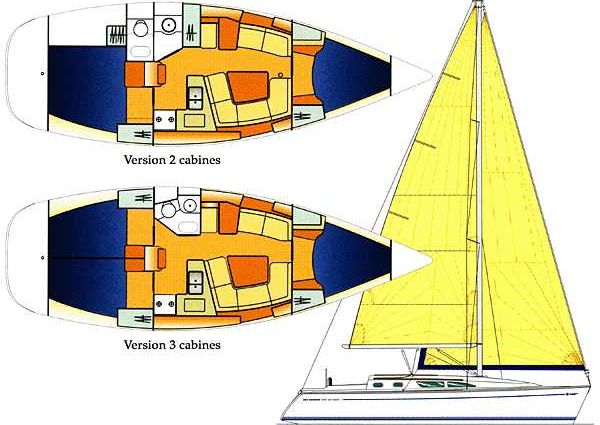 |
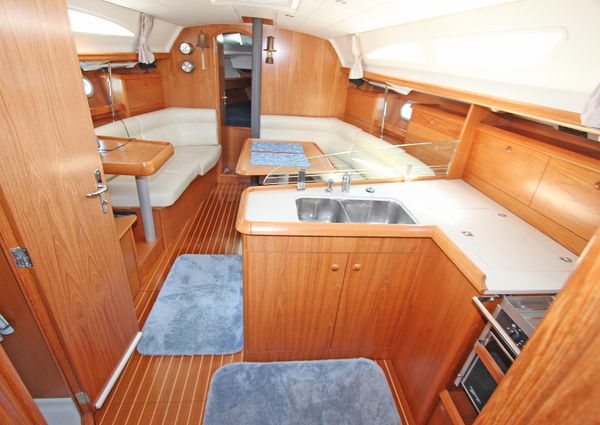 |
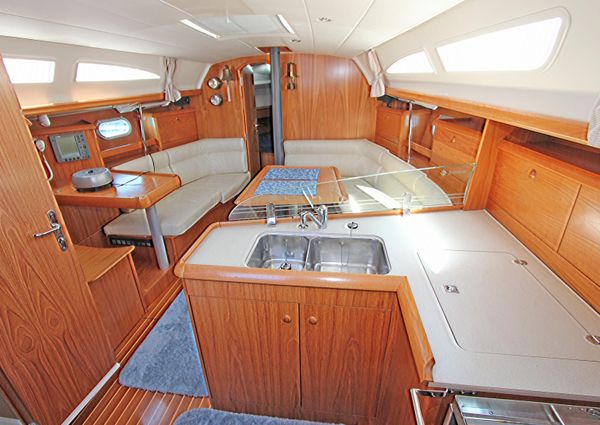 |
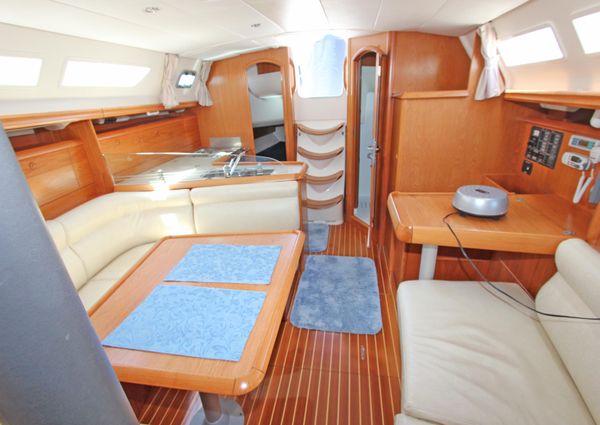 |
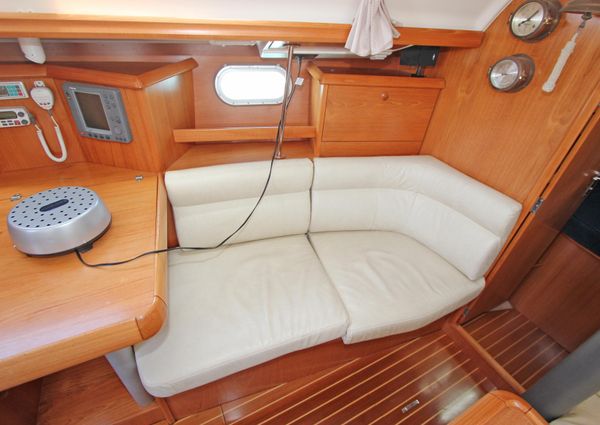 |
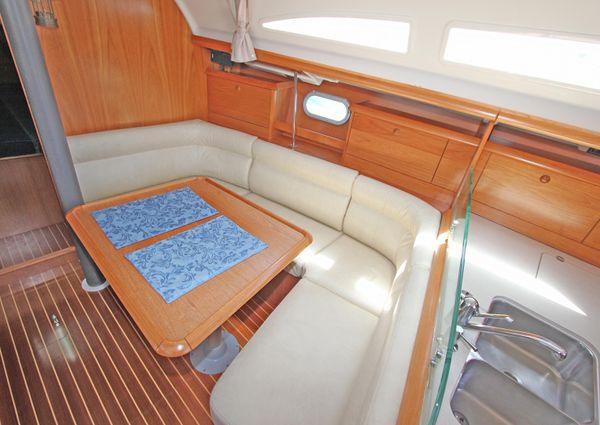 |
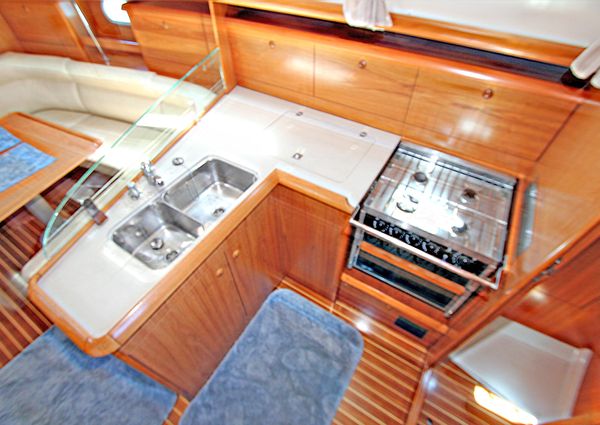 |
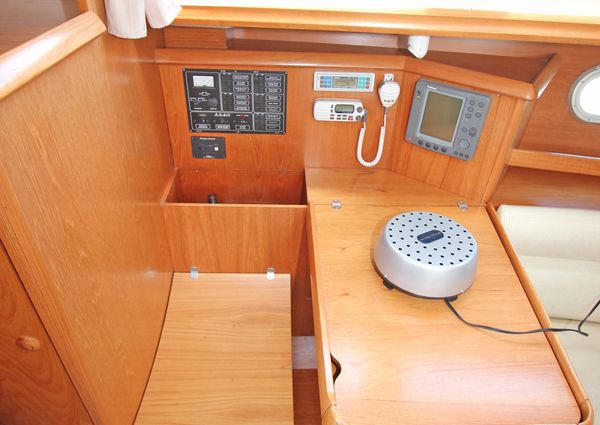 |
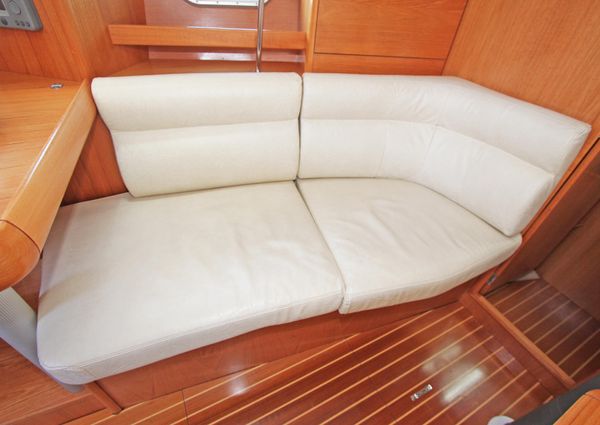 |
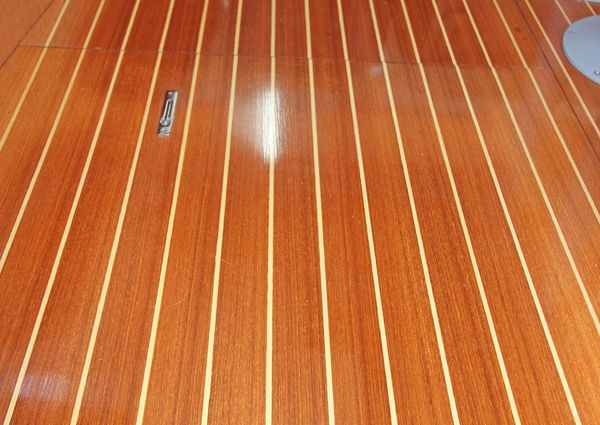 |
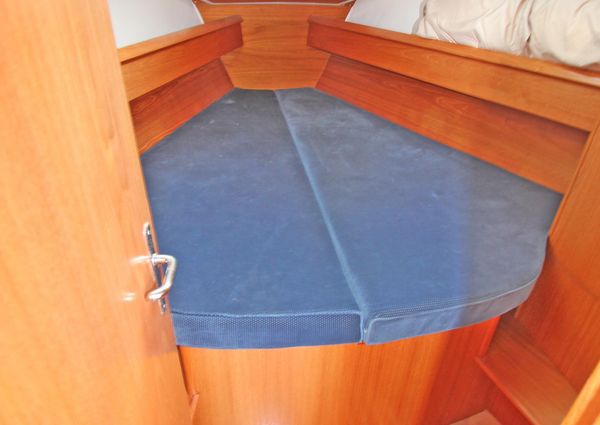 |
 |
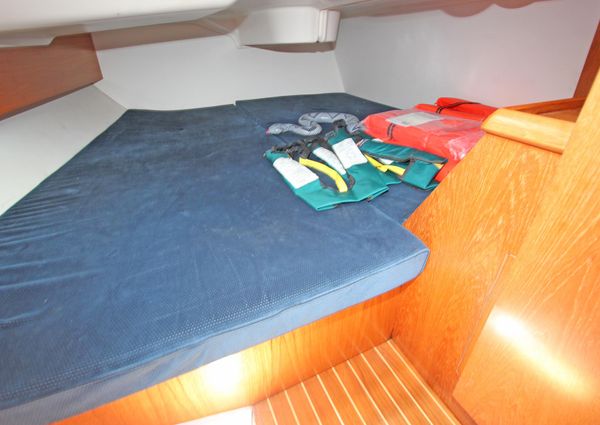 |
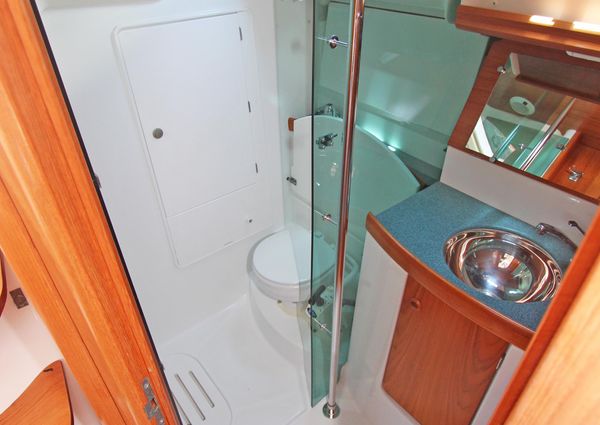 |
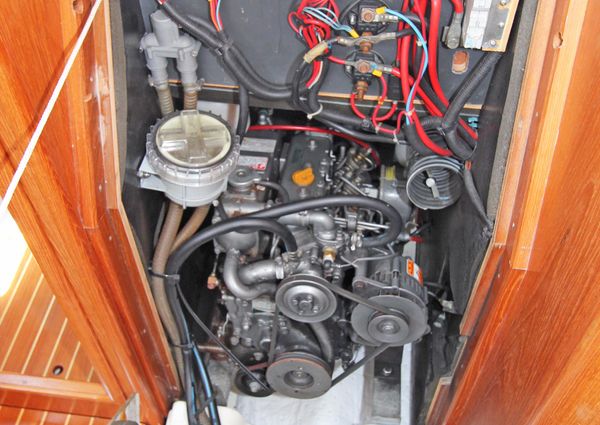 |
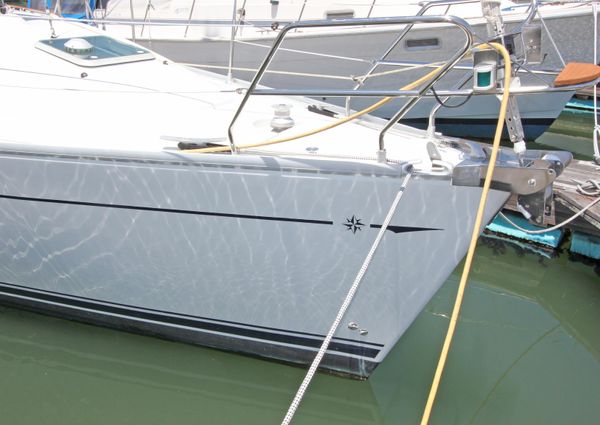 |
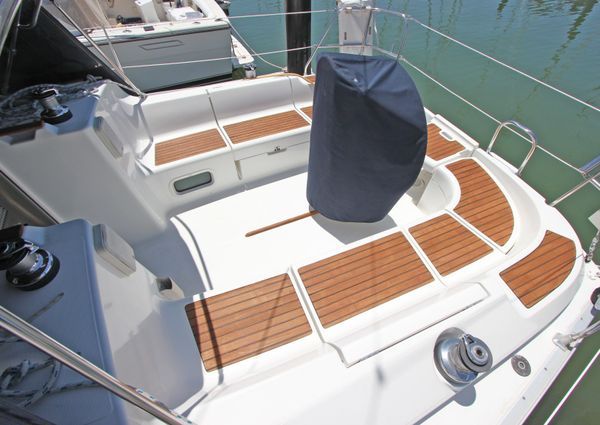 |
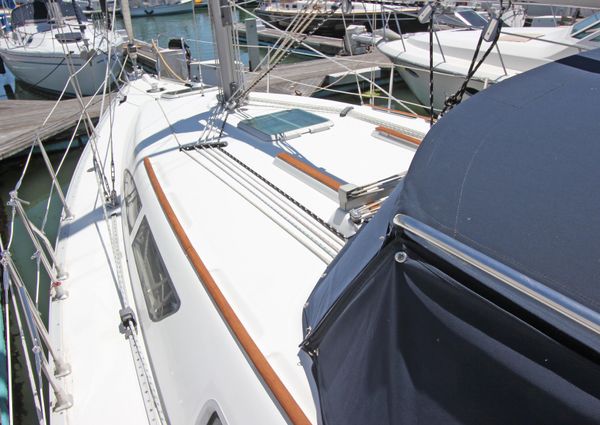 |
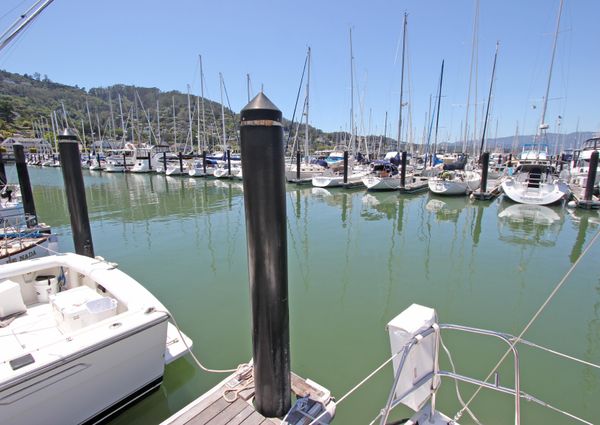 |
Guest stateroom with large triangle shaped berth and plenty of storage forward, step aft to salon with loveseat-length settee port side and large C-shaped settee with dinette across to starboard.
Continuing aft is head with stall shower port side, centerline companionway, and functional L shaped galley across with master stateroom far aft. Master stateroom has a GIANT berth set under cockpit.
Note interior shows (and smells! as new, flawless joinery, 6' 3 headroom.
Nice L shaped galley with twin stainless steel sinks with hot/cold pressure water and one touch faucet, propane four burner gimballed stove with oven (which looks like its never been used!), ice box. Jabsco manual pump head.
110V AC / 12V DC. Thirty amp shorepower service, smart battery charger, three batteries in two banks with parallel switch.
Raytheon RC520 color chartplotter, Raytheon RL70 Pathfinder radar, Raymarine SmartPilot autopilot (over sized for added measure of confidence), Rayteon Tridata (depth/speed/log), Standard Horizon VHF radio, Plastimo magnetic compass.
Jensen AM/FM/CD stereo.
Deck stepped aluminum mast with compression post, double spreader with 1x19 standing rigging (apx. 10 years old)and in-mast Lee Sails mainsail, aluminum boom. Lee Sails 105% jib on Profurl rollerfurler, all lines lead aft thru 11 rope clutches.
Two #44 Harken self-tailing winches, two Harken #32 self-tailing winches, Z Spars mainsheet with traveller, Z Spars boomvang, genoa track port and starboard with cars.
Note the mast step was redone in 2022, this was a MAJOR project and covered under insurance.
Solid, hand-laid fiberglass hull with Kevlar reinforcements in high-load areas surrounding the keel and mast step, and vinylester resin is used in the outer plies of the laminate to help prevent blistering.
The boat is built without molded interior liners. To provide stiffness, there is a grid of longitudinal hardwood stringers and floors encapsulated in fiberglass and glassed to the hull. This also makes a framework for the sole, floorboards and cabinetry. Bulkheads are bonded to the hull in channels and secured with Sikaflex.
In a departure from the 36.2, the headliner is glued to the underside of the deck and is not removable. Except for wiring for halogen ceiling lights, however, we found wiring and plumbing runs accessible behind interior cabinetry and beneath floorboards.
The hull/deck joint consists of an inward-facing flange at the top of the hull that is glued to the deck with Sikaflex. Then the toerail is mounted over the deck and screwed in place, strengthening the joint and hiding the seam. We prefer the combination of bolts, nuts and washers employed on the 36.2.
The deck is laid up with fiberglass cloth and cored with balsa, except in high-load areas, which are solid fiberglass.
The rudder is tall and narrow, typical of today’s performance boats, and made of fiberglass with a stainless steel stock. The rudder shaft is adjusted by two self-aligning bearings.
The engine beds are hardwood/fiberglass stringers into which the engine is secured with lag bolts. A molded pan underneath the engine prevents oil spills from flowing into the bilge.
Stainless steel stanchions with double lifelines, stainless steel bow and stern pulpits, stainless steel folding swim ladder.
Lofrans electric windlass, six mooring cleats.
If you need proof that the merger of Jeanneau and Beneteau is working, look no further than this handsome sloop. Built in France to Jeanneau's usual high construction standards, the 37 Sun Odyssey is a performance-oriented cruiser with spacious accommodations. And it has one feature that is especially appealing: a sail-away price that few builders can match. Even if the companies were completely independent operations, Jeanneau and Beneteau would still be the two largest sailboat manufacturers in the world today.
It wasn't always like that. While Beneteau's humble beginnings have been well-documented, Jeanneau's founding 44 years ago in Les Herbiers, France, was equally modest. Jeanneau originally built small runabouts, but by the early '70s it had begun building production sailboats.
Like many builders of the period, Jeanneau was swallowed up by the long reach of Bangor Punta, the American conglomerate, which at one time was the largest sailboat builder in the world. Eventually, however, Bangor Punta soured on the boat business and Jeanneau was sold to Chetellier Industries. Although Jeanneau's product line maintained a high level of quality throughout the ownership shuffles, the company was foundering in a tough market before Beneteau stepped in and rescued its former chief competitor in 1995. It is nice to report that today the Jeanneau sailboat division is alive and well, building boats up to 52 feet.
All aboard
I recently test sailed the Sun Odyssey 37 on a clear, light-wind day on Chesapeake Bay. At first glance, the profile view of the 37 looks a lot like other modern production boats-minimal overhangs and a reverse transom, a generous beam carried well aft, a flat sheerline and a racy sloping cabintrunk. As you climb aboard, however, you quickly notice many fine details.
Designer Fauroux is especially proud of the "smooth-roof" design, with recessed portlights and clean aft leads for all sail controls. Jeanneau has always done some of the best fiberglass work in the industry, and the blend of compound curves and straight lines makes a beautiful transition from the drawing board to tools and finally to the seagoing deck.
Below the water, the Sun Odyssey features a shallow forefoot and overall flat sections. There isn't much of a bilge, and the 37 will want to be sailed on its lines. Two keel configurations are offered. The standard deep-fin keel is epoxy-coated iron, with a draft of 6 feet, 4 inches, whereas the shoal model has a draft of 4 feet, 9 inches and carries about 10 percent more ballast for a 33-percent balance-to-displacement ratio.
The balanced rudder is fiberglass, and the stock is solid stainless steel. There are two self-aligning rudder bearings. The hull of the Sun Odyssey 37 is solid fiberglass and laid-up by hand, with Kevlar for added strength and resistance in high-load areas.
Full-length longitudinal stringers stiffen the hull. I am often surprised more builders don't use full-length stringers: They are clearly more effective than partial stringers, although they are more time consuming to build around.
The hull is supported athwartships by a grid system of floors. The deck is balsa-cored, and the mast is deck-stepped. The cockpit of the Sun Odyssey 37 is typically huge, well-thought-out and quite comfortable. However, a short helmsperson needs to stand to see around the husky, functional pedestal, which seems more like the console in an open fishing boat than something you'd find on a sailboat. In its favor, it includes a convenient location for mounting instruments and a fiberglass fold-out table. The aft coaming is flattened, providing an ideal position for steering.
The cockpit seats and sole are covered with teak, which not only looks nice but also provides secure footing. The seat backs are angled for good lumbar support, and there are two large lockers, with dedicated storage for the life raft to starboard. There is even an adequate bridgedeck, which is a welcome feature on new boats.
Access to the transom step is through a removable helmsman's seat. A fold-down ladder and hot-and-cold freshwater shower are standard.
Deck duty
As a delivery skipper, I appreciate the differences in nonskid surfaces. Overall, molded nonskids are rarely as effective as painted or externally applied surfaces, except in the case of Jeanneau. Its intricate molded nonskid pattern is superb.
The sail-away package is quite complete, so there are few options available. Interestingly, one of the options is the choice of teak side decks, which look nice but add a level of maintenance most of us can do without. The Sun Odyssey 37 has an aluminum toerail without any attachment points for securing blocks or lines. There is also a midship fairlead for springlines, but no cleat. Two more of the stout Goit mooring cleats that are used on the bow and stern would be perfect.
Overall the deck hardware is top-quality, with a mixture of Goit and Harken, including Harken sheet winches. The stainless steel stemhead fitting with its double anchor rollers is a useful feature on a boat of any size. A manual windlass is standard, and there is a large deck-opening anchor and chain locker. The bow pulpit has a teak platform, and the stanchions supporting the double lifelines appear to be well-supported. The deck-stepped mast features double swept-back spreaders. The uppers and lowers are led to single-pod chainplates, and there is also an inner forestay.
The 80-percent battened mainsail has a midboom sheeting arrangement, with a traveler on the deckhouse forward of the companionway hatch. A lazy-bag sail cover is standard, and a ProFurl furling system controls the 130-percent genoa, although I'd like to see load-bearing adjustable genoa track cars as well. As noted earlier, all sail controls, including the slab-reefing lines, are led aft through a series of turning blocks and jammers to the cockpit. There is a single self-tailing winch on each side of the companionway.
Down below
Stepping below you are immediately struck by the high level of finish. The Sun Odyssey may be priced like a typical production boat, but it is finished like a yacht. From the oversized teak fiddles in the galley to teak veneered bulkheads and teak cabin sole, the cabin gives an aura of warmth. Well-placed overhead hatches and opening portlights, however, will provide plenty of ventilation, keeping that warm feeling strictly a visual sensation.
The interior arrangement for both versions is logically the same, the only difference being in the choice of one or two aft cabins. A V-berth is forward, with a hanging locker to starboard and storage locker with a counter top to port. Lateral shelving lining the V-berth adds additional storage. The bladder water tank is located under this bunk. The saloon includes a V-shaped settee straddling a teak table with comfortable seating for five or six, although it's a tight squeeze past the compression post.
The port-side settee converts into a single berth and, with the addition of a lee cloth, makes the best sea berth aboard. There is a lot of storage in lockers above and behind the settees and in bins below. Several small features enhance the livability of the interior, including wonderful halogen lighting and sliding curtains for each overhead hatch.
The L-shaped galley is to starboard and provides enough working space to prepare elegant meals at anchor or simple menus while under way. Double stainless sinks face forward, and the two-burner stove with oven is outboard. There is a large 40-gallon, top-loading icebox with standard 12-volt refrigeration. There is plenty of storage space behind the cooker and below the sinks, but counter space is a bit limited.
The shallow navigation desk, along with the electrical panel, is opposite the galley. One reason why the 37's interior seems spacious is because there is only one head. But then how many heads do you really need in a 37-foot boat anyway? The molded fiberglass head unit is aft of the nav station and includes a separate shower area. It is a much better use of space than trying to cram in another small head. In the single aft cabin layout, the berth is tucked under the cockpit with the door to starboard. There is a large hanging locker and several other storage lockers.
In the double-cabin layout, the head is smaller and there is only one hanging locker in each stateroom. There is a surprising amount of space, with 6 feet, 4 inches of headroom forward of the bunk. The batteries and fuel tank are under the bunk, and there is good access to the engine compartment from the aft cabin. The boat I tested had the two-cabin layout. Unless you intend to charter the boat or have a crew with special needs for private cabins, I'd opt for this arrangement.
The head in the three-cabin version is compressed to fit in the extra stateroom, and in practical terms, other than when sleeping, who spends much time inside staterooms anyway? Three staterooms in any 37-footer is a stretch.
The standard engine is a 27-horsepower Yanmar, which pushes the 13,448-pound Sun Odyssey along adequately. However, once the boat is loaded up for cruising, a larger engine might be an option to consider. Another idea would be to exchange the standard two-blade prop for a three-bladed variable-pitch prop. The fuel capacity is 36 gallons, providing an average smooth-water range of 250 to 300 miles for the fuel-efficient Yanmar. The water capacity is 85 gallons. Both of these tankages would need to be increased for serious cruising or living aboard.
On the water
The wind was fickle as we cleared Back Creek and tacked north. Noting a little breeze blowing down the Severn River, we hauled in the sheets and headed that way close hauled. Naturally the helm was light, but the steering was impressively tight. A small move of the wheel resulted in a noticeable course change. We short tacked up the river, easily coming through the wind despite the light air.
I am not usually a fan of midboom sheeting, but the Sun Odyssey's mainsheet has plenty of purchase and trimming up the main was the key to quick acceleration after each tack. Standing at the helm, the view was good and the sheet winches were easy to reach, although the helmsman is out of the loop when it comes to trimming the main. The three of us aboard during the test hardly made a dent in the cockpit space. Luckily a bit of breeze emerged once we made our way back into the bay, and the Sun Odyssey skipped along on a close reach at 5 knots.
The boat was nicely powered with the 130-percent genoa and responded to puffs with bursts of speed. Sitting in the cockpit, with the afternoon sun shielded by the sails and gliding along without any signs of stress or anxiety, it was readily apparent that Jeanneau had created an ideal family cruiser. This is especially true since, with a fairly well-equipped sail-away price of $112,900, a family might actually be able to consider sailing away.
John Kretschmer, Sailing Magazine, February 7, 2000
The Company offers the details of this vessel in good faith but cannot guarantee or warrant the accuracy of this information nor warrant the condition of the vessel. A buyer should instruct his agents, or his surveyors, to investigate such details as the buyer desires validated. This vessel is offered subject to prior sale, price change, or withdrawal without notice.